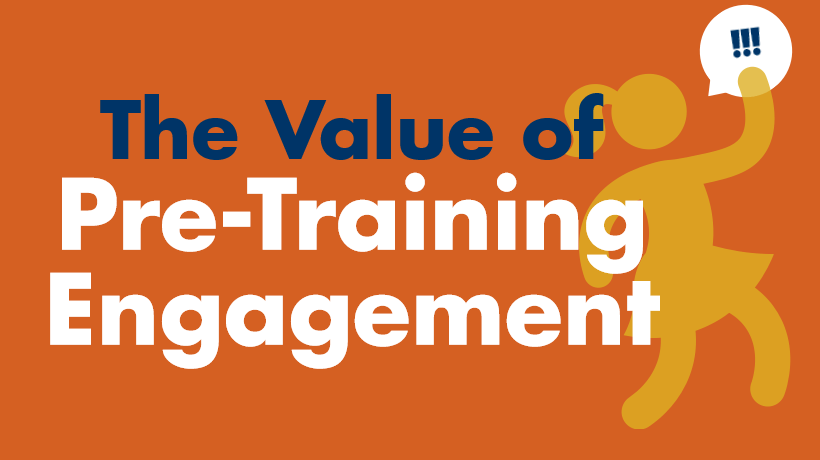Why We Need Pre-Training Engagement
So, why we need pre-training engagement in corporate training? This is not going to be another article extolling the virtues of learner engagement in corporate training. It’s pretty clear by now that our training will be more effective if the learners are actually paying attention, and we know quite a bit about how to increase engagement in the training.
We know we need interactivity, and recent research suggests multi-sensory interactivity is most effective (the presence of voiceovers in particular significantly enhanced engagement). We know engagement is increased when we tie learning to real-life problems, and the more a learner can identify with the details of the problems, the more engaged they’ll be. And we know social ties are a central component of engagement. Recent research on brand engagement indicates “interaction, participation, dialogue, co-creation, and sharing of brand-related values” with a social group dramatically increases feelings of engagement with the brand. We understand these principles well, and my experience suggests that Learning and Development, as a group, is doing better and better at producing engaging training.
But why should we wait for the training to begin to try to engage our audience?
I wrote last month about the importance of treating our learners as customers, and one of the most important ways we can do this is by generating interest before the training starts. Marketers understand the importance of this because there is a natural barrier to entry for any consumer experience: The cost.
Take movies, for example. Movies are expensive and loud and all the way across town and it’s not socially acceptable to wear my pajamas to the theater. In short, there are a lot of reasons for me to not go see a movie. But when I saw the trailers for The Force Awakens, I couldn’t want for the chance to put on real pants, drive across town, and pay my $12 to see it. I was engaged, and the movie hadn’t even opened yet.
The Opportunity To Engage
We have an opportunity to create pre-training engagement as well, but we rarely do. A recent survey shows Learning and Development teams do a very good job at what we might call “reactive engagement”: Using data about the training to improve it and increase learner response.
Training consumption trends and scores on learning assessments are used by almost half of those surveyed to increase engagement. Much more rare are tactics that serve to increase engagement before the training starts: Promotional videos are used by one-third of respondents and training incentives are used by less than one-fourth.
The Advantages Of Building Engagement
There are risks and expenses to working to build engagement before training, but the upside is enormous. Helping our learners understand how the training will benefit them is a huge advantage.
First impressions are key, and finding out about a new compliance training through a one-line company email can be disheartening to say the least. A promotional campaign in which we explain that better adherence to policies will increase efficiency and save jobs could make the 30-minute course seem like a reasonable investment in the company. A small gift card for participation can show your team that you value their time and are not simply forcing them to click through an eLearning course. These simple measures can significantly improve employee attitudes to training, and recent research has shown the importance of positive employee attitudes toward change management initiatives.
We don’t want to wait until the training has started to try to get corporate learners engaged. A little pre-training engagement can go a long way.









